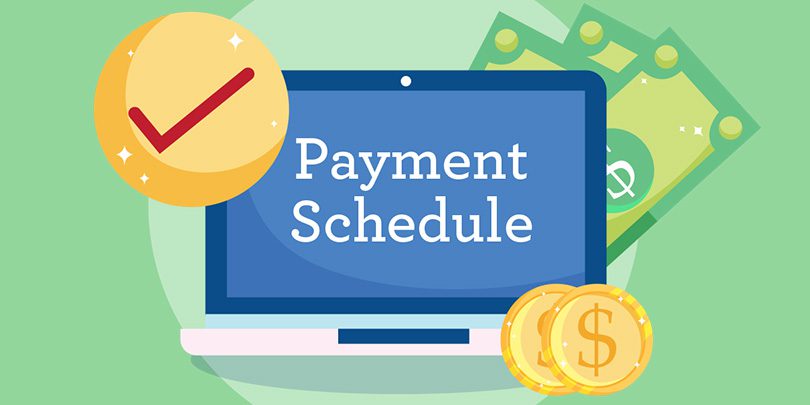Yea! You’ve just made a booking! After screening your tenants and determining that they are indeed a good fit for your home, they have given you a verbal (or email) commitment. What’s the next step? Since there are no set or legally binding rules governing the payment schedule of vacation rental bookings, it’s pretty much up to you, the homeowner, to determine when you require funds, and how much, to reserve a booking. Those of you who have been renting your vacation homes for some time undoubtedly have a system that has worked well for you and your tenants. If so, stick with it. For those of you just getting started, here are a couple of suggestions.
The Norm
One fairly standard procedure is to receive a deposit equal to half of the total rent initially with the lease. Simply send the vacationer two copies of the lease signed by you with instructions to keep one for their records and sign and return the other with the initial deposit at their earliest convenience. (The lease usually stipulates the number of days after their receipt of the lease from you.)
The balance of the rent is then due anywhere from one to three months prior to the tenant’s taking possession of the home. Especially if your home is on Martha’s Vineyard or Nantucket, we recommend collecting the rent balance at least 2 months prior to arrival.
Any applicable fees or taxes should be collected in the final balance payment. Security deposits are usually due at least 30 days prior to arrival – just as long as the funds have cleared before they arrive.
The Alternative
Another option is to request that the vacationer send you a $200-$300 booking deposit to reserve the dates. Once you receive the payment from them, you would mail them the 2 signed copies of the lease and request that they sign and return one with another payment for 50% of the rent. The balance, plus any applicable fees and taxes, would then be due within 1-3 months prior to their arrival.
Pros and Cons: Some homeowners prefer this alternative option, which requires the tenant to send money immediately and thus can prevent wasting time and effort to draw up a lease if the vacationers change their minds in this early phase. But it does create an additional step for the vacationers. (They would be making 3 payments instead of 2, plus the security deposit.) “The Norm,” on the other hand, provides advantages to us homeowners in having the signed lease and half the rent within a week, as opposed to receiving only $200-$300 using “The Alternative” method, and then having to wait to receive the lease and the first half of the rent.
Late or Last-minute Bookings
If a booking is made within a couple of months of the vacationer’s arrival, it’s not unusual to require the entire amount of the rent initially with the lease. After all, if they should renege that late in the game for any reason, it would be very difficult for you to find a replacement.
Early Bookings
For early bookings – say, a fall booking for a rental during the following summer – you should certainly get a signed lease and a deposit of anywhere from 25- 50% of the total rent up front. If the vacationer is reluctant to pay 50% up front, you could ask for a third upon booking, another third in January, and the balance, with applicable tax, a month prior to the tenant’s arrival.
Making Exceptions for Returning Tenants
Some homeowners allow prior renters to hold their same week for the next summer simply by sending a small deposit. Then the homeowners require a definite commitment by early December or January, when they send out the leases to returning tenants and begin taking bookings for the unfilled weeks. The previous tenants appreciate this system.
As an added incentive for prior renters to commit early, you might offer them last year’s rate as opposed to your new rate (if you increase your rates).
An important side note: No matter which schedule you use, you may wish to use a Booking Management System to track your payments and avoid the rental nightmare of double booking.
Do you have any great rental payment schedule or booking tips? Which process do you prefer?








[…] Payment Schedules […]